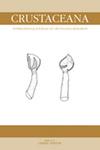Characterization and expression analysis of β-catenin from Exopalaemon carinicauda (Holthuis, 1950) (Caridea, Palaemonidae) in embryonic development and immune response to bacteria
IF 0.7
4区 生物学
Q4 MARINE & FRESHWATER BIOLOGY
引用次数: 0
Abstract
β-catenin is an important signal transduction protein in the canonical Wnt/β-catenin pathway, which is widely involved in the development of animals. However, the role of β-catenin in crustaceans is still unclear. In this study, the cDNA of β-catenin from Exopalaemon carinicauda (Holthuis, 1950) was identified and characterized. The open reading frame (ORF) is 2424 bp, which encodes 807 amino acids containing an N-terminal region of a GSK-β consensus phosphorylation site and a central region of 11 armadillo (ARM) repeats. The tissue distribution showed that β-catenin was highly expressed in ovary, testis, hepatopancreas, heart, and gills. During embryonic development, the transcript of β-catenin was relatively high in the zygote, and the thirty-two-cell stage, blastula stage, gastrula stage, and nauplius stage. The transcripts of β-catenin in haemocytes, gills, and hepatopancreas were significantly up-regulated after infection with Vibrio anguillarum Bergeman, 1909. These results indicate that β-catenin participates in the regulation of embryonic development and in the immune response in E. carinicauda.Exopalaemon carinicauda (Holthuis, 1950) β-catenin在胚胎发育和细菌免疫应答中的表达分析
β-catenin是典型Wnt/β-catenin通路中重要的信号转导蛋白,广泛参与动物的发育过程。然而,β-连环蛋白在甲壳类动物中的作用尚不清楚。本研究对Exopalaemon carinicauda (Holthuis, 1950)中β-catenin的cDNA进行了鉴定和鉴定。开放阅读框(ORF)全长2424bp,编码807个氨基酸,包含GSK-β一致磷酸化位点的n端区域和11个armadillo (ARM)重复序列的中心区域。组织分布表明,β-catenin在卵巢、睾丸、肝胰腺、心脏和鳃中均有高表达。在胚胎发育过程中,β-catenin的转录量在合子、32细胞期、囊胚期、原胚期和无体期较高。在感染了鳗弧菌(Vibrio anguillarum Bergeman, 1909)后,血细胞、鳃和肝胰腺中β-catenin的转录量显著上调。这些结果表明,β-连环蛋白参与了牛毛蟹胚胎发育和免疫应答的调控。
本文章由计算机程序翻译,如有差异,请以英文原文为准。
求助全文
约1分钟内获得全文
求助全文
来源期刊

Crustaceana
生物-海洋与淡水生物学
CiteScore
1.30
自引率
33.30%
发文量
52
审稿时长
3 months
期刊介绍:
Crustaceana is a leading journal in the world on crustacean research, including the latest papers from all branches of zoology. It provides up-to-date information on aspects such as taxonomy, zoogeography, ecology, physiology, anatomy, genetics, palaeontology, and biometry, and covers all groups of Crustacea. Boasting a large international circulation, Crustaceana provides its readers with an abstract for each article.
 求助内容:
求助内容: 应助结果提醒方式:
应助结果提醒方式:


